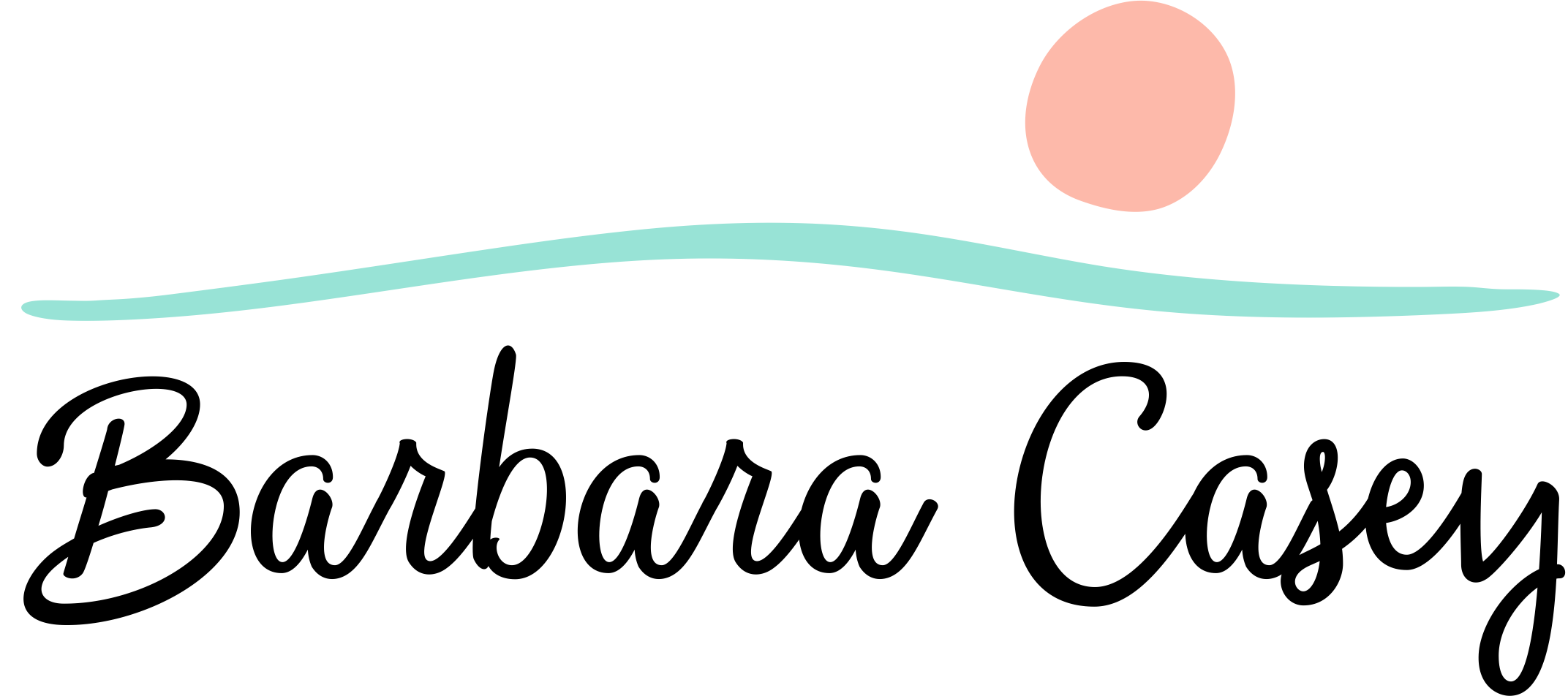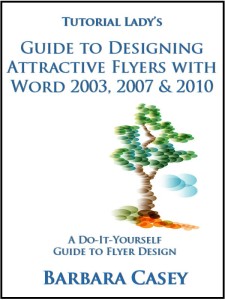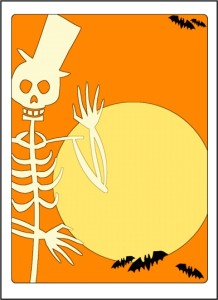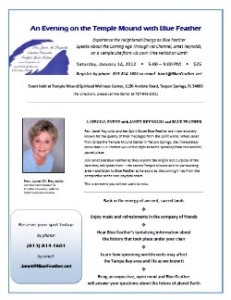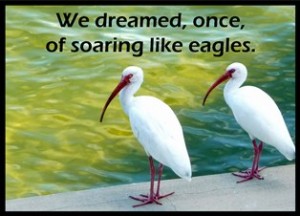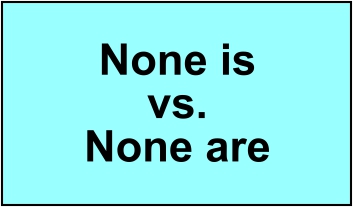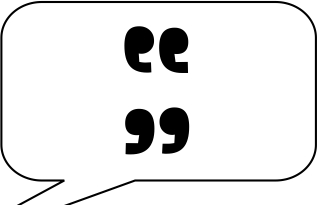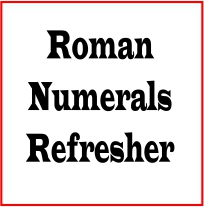The Complete Word Flyer Design Tutorial on One Page… for Word 2003, 2007 and 2010
This page is a step-by-step tutorial on how to create flyers with Microsoft Word… with detailed instructions for Word versions 2003, 2007 and 2010.
I originally created this Word flyer tutorial in 2006 for clients who wanted to update their own marketing materials… but didn’t own Microsoft Publisher, which was the desktop publishing program I was using at the time.
My first flyer design tutorial was for Word version 2003 and I’ve updated the lessons since then to include the new tweaks for Word 2007 and Word 2010, which is the latest version I own.
You’ll learn the basics of:
- Page margins
- Borders
- Font styles and sizes
- Font embedding’
- Paragraph indenting
- Paragraph and line spacing
- Inserting graphics
- Wrapping your text around graphics
- Resizing, repositioning, cropping and rotating graphics
- Working with Microsoft’s FREE templates
Set Up The Quick Access Toolbar First
Word 2007-2010 users – here’s how to place your most-used shortcut icons on your toolbar
Setting up your toolbar to include the icons you use most will save you a ton of time and frustration.
WORD 2007:
Click on the Office Button (the Windows symbol)
Click on Word Options
Click on Customize
Find icons for the commands you use most in the “Choose Commands From” box on the left side and “ADD” them to the “Customize Quick Access Toolbar” box on the right side. Don’t forget to click OK.
WORD 2010:
Click on the File tab
Click on Options
Click on Quick Access Toolbar
Choose the commands you use the most and want handy and “ADD” them to the “Customize Quick Access Toolbar” box on the right side.
Click OK
These are the shortcut icons I use:
New
Open
Save
Save As
Undo
Redo
Print Preview
Page Setup
You’ll likely see others that you’ll want to add, such as copy and paste. (I use Control C and Control P for these).
To place these icons where you can easily see them, click on Add and when your list is complete in the right hand box, you can rearrange them by using the up and down arrows.
12 Flyer design essentials – start here
- White space around your text makes it easier for people to read your flyer’s content. Try not to jam too much into one area.
- BORDER DON’T: If you place your border too close to the text, it makes it hard to read and people will tend to ignore what you have to say. (See more about borders below.)
- HEADLINE DO: A catchy headline draws people in better than a boring headline. For super headline ideas, get a copy of Tested Advertising Methodsthe renowned classic by John Caples. Mine is highlighted, underlined and sticky-noted.
- SUBHEADS: Subheadings make your flyer text easier to read (breaks text into more manageable chunks) and allow people to scan your flyer for pertinent points. Folks should be able to scan your headline and subheads and know what your flyer is trying to tell them.
- Make sure you “ask for the sale.” If you want people to call you, make sure you say, “Call so-and-so at XXX-XXX-XXXX” or “Call XXX-XXX-XXXX to register before (date) for your early bird discount.” Know what you’d like your reader to do… and ask them to do it.
- If your flyer is announcing a class or workshop, make sure all of your contact information is included. Also, the time, place, and cost should be easy to find on the flyer.
- “UNDO” YOUR MISTAKES – Learn how to use the “undo” function. If you make a mistake and want to revert to what you had before you made the mistake (or chose a color you didn’t like, or placed a border that didn’t work, etc.), click on the Undo option. You can undo quite a few previous actions by hitting “undo” over and over. Stop undoing when you get back to where you want to be… so you can start over.IN WORD 2007 and 2010, find UNDO by right-clicking (anywhere) on the Ribbon (toolbar with all the tabs), selecting Customize Quick Access Toolbar, selecting the Undo icon, adding it to the section on the right and hitting OK to save.
- USE THESE TOOLBARS: To use Word for flyers, make sure you have the right toolbars open (so your shortcuts – represented by those little graphical icons – are visible and handy): Go to View; Toolbars; and make sure these are checked: Standard, Formatting, Drawing, Picture, Reviewing and PDF Maker. See below for Word 2007/2010 how-to’s.
- It’s easiest to see what your finished flyer will look like if you’re viewing it in “Print Layout.” On the top line, click on View, then Print Layout. In WORD 2007 and 2010, find the Print Layout option at the View tab.
- AUTOCORRECT OPTIONS: In Word 2003, choose these “autocorrect” options at Tools, Autocorrect Options, Autoformat: Check “replace straight quotes with curly quotes” and “replace hyphens (–) with dash.” I like to UNcheck automatic bullet and number lists, because they pop up when I don’t need ’em. I can always add a number or bullet list quickly using the icons on my toolbar instead.For WORD 2007, click on the Office Button, click on Word Options, click on Proofing, then click on AutoCorrect Options and choose your preferences. In Word 2010, you can click on the File tab, then Options, then Proofing. The AutoCorrect options are at the top of the pop-up page.
- In WORD 2007 and 2010, you can convert your Word flyer to a PDF document by using the “Save As” function.
- Don’t forget to EMBED YOUR FONTS if you’re emailing your flyers (see how below).
(1) Set Your Page Margins
Sufficient white space sets off your text for easier reading
To set your top, bottom, right and left margins so that you have enough space for a border outside your text, go to:
WORD 2003:
File (it’s on the top line)
Page Setup (from the drop-down menu)
WORD 2007 and 2010:
Click on Page Layout tab
Click on the Margins drop-down box
Choose the default margins or customize for your own preferences
I like to use a minimum of 1″ for margins, even up to 1.25 inches, depending on how much text I have.
In Page Setup (Word 2003) or Page Layout (Word 2007-2010), you can change your header and footer settings to 0 inches if you don’t need page numbering, or a title across the top of all the pages, or a copyright notice on the bottom of all the pages. For a one-page flyer, try 1 to 1.25 inches for your margin, with no headers and footers.

Border example from Dreamstime.com
(2) Make a Border Around Your Page
Page borders (not text box borders)
For a simple border around your page (and not around your text box), go to:
WORD 2003:
File
Page Setup
Layout
Click on Page Borders button
Click on Box (or shadow box or 3-D box)
Choose the Style you want (plain border, dashed, dotted, zig-zag, double line, shaded line, etc. Choose these from the drop-down menu).
Choose the Color you want (a) from the drop down box… or (b) click on More Line Colors to see additional colors.
WORD 2007 and 2010:
Page Layout tab
Page Borders
At Settings, choose the box type you want (box, shadow, 3-D, custom)
Choose style (solid, dotted, etc.)
Choose color
Choose the width (thickness) of the line
Choose ART if you want a graphical border around your page
Click Options to set your border farther away from (measure from) the “Edge of Page” or your “Text” box.
Increase the number of points that you want between your text and border.
TEMPLATES – Create Flyers the Easy Way
If you find a pre-designed format that works for you… it simplifies everything.
If you don’t like designing “from scratch,” here’s a way to make flyers quickly and easily. (The flyer below is a stock template I found using the instructions for Word 2010 below.) You can also click here to access additional templates at Microsoft.com.
In WORD 2003, click on FILE, then NEW.
On the right side of the screen, you’ll see a number of options.
Scroll down to see all the template options. Click on FLYERS.
Click on the flyer option you’d like to work with, choosing: Event, Marketing, Real Estate or Other.
Then scroll through the numerous possibilities and click on one you’d like to use for your flyer.
You’ll be taken to a Download page. Click the DOWNLOAD button and this will open a new Word document, which you can immediately start working with. Just change the template’s wording for your own and print.
WORD 2007:
To make a new flyer from a template, click on “New.”
Under Microsoft Office Online, find “Flyers” and click on it.
You can enter a search term for a specific type of template (e.g. – “open house” or “birthday party.”)
Or choose the options listed: Event, Marketing, Real Estate or Other Flyers.
Click the Download button to open the template on your own computer. You can enter the text in the boxes already there or delete them and place your own. See below for how to insert graphics.
WORD 2010:
Click on the File Tab
Click on New
Click on Flyers (you’ll have a huge array of options in addition to flyers, including gift certificates, greeting cards, resumes, etc.)
Search through the 9 files for a design you like and double-click to download it.
Replace the text with your own and SAVE AS a new title in a file folder in the documents section of your computer (or desktop).
In Word 2010, you can also add a theme to your flyer.
Click on the Page Layout tab
Click on Themes
You can automatically change font types and colors for your entire document. Experiment with Themes to see which ones you like.
(3) How to Choose and Work with Fonts
Fonts are important… if you want people to actually read your flyer
You can type all your text first… and then change the fonts from whatever is set as your “default” font (often Times New Roman) or you can enter text and change it as you go along.
To change fonts within a document or flyer, select the text you want to change and click on:
WORD 2003:
Format
Font
Choose a strong, bold headline font for the main heading. You could use this same font in smaller type or in italics for your subheads.
Type your headline. If you want to make it look fancier, you could format it with WordArt: Select your headline text, click on Insert, Picture, WordArt and choose the WordArt shape and color you like. The Edit WordArt Text box pops up where you can change the font style and size to fit your flyer. If you right click on your WordArt text, a box pops up that lets you do even more.
For the main text of your flyer, choose an easy-to-read font. A “serif” font such as Times New Roman works well if there is lots to read. If you don’t have a lot of text, a sans-serif font such as Arial or Futura works well.
Try not to use more than 2-3 different fonts within one flyer or document. If you want text to stand out, you could use the italics and bold options for variety. Don’t underline too much either – just a single word here and there – otherwise your text will be too hard to read. If you like fancy fonts, they’re okay for short headings, but not for blocks of text.
Start with an 11 or 12 point size until you see how much space it all takes up. You can always select the text and go back to Format, Font to change the size or bolding/italics, etc. Your toolbar should show the font names and sizes in drop-down menus, which makes changing your font types and sizes even quicker and easier. Make sure your “Formatting” tool bar is checked to access this feature.
You’ll notice some fancier font options for embossing, outlining, underlining, color, etc. Play with these to see what looks good. You can even have different colors for the text and underlining.
WORD 2007 and 2010:
At the Home tab, choose the Font Type and Size from the drop down boxes.
Or choose Theme for your document (Page Layout tab, click on Themes).
(3a) How to EMBED Your Fonts
This is a MUST if you email your flyers as Word documents.
*** EMBED YOUR FONTS if you’re planning to email your flyer or make a PDF file of your flyer. Not everyone has the same fonts on their computer and if you don’t embed your fonts when you send your flyer to someone else, it could end up looking very different.
WORD 2003:
Go to Tools, Options, click on the Save tab, and choose Embed True Type Fonts. Save your changes.
WORD 2007:
Click on the Office Button
Click on Word Options
Click on Save
Check the box for “Embed fonts in the file”
You can also check the box “Do not embed common system fonts” to save memory space
WORD 2010:
Click on the File tab
Click on Options
Click on Save
Check the box for “Embed fonts in the file”
You can also check the box “Do not embed common system fonts” to save memory space.
(4) Format Your Paragraphs
This automates so much of your work
You can make things easier on yourself by setting up your paragraph formatting ahead of time. Just make sure you first place your cursor somewhere in the text you wish to format. In the graphic to the right (a flyer I created for a client), you’ll see examples of centered, flush left and justified text… all in different text boxes.
WORD 2003:
Set your paragraph alignment by clicking on:
Format
Paragraph
General: Alignment
From the Alignment drop-down box, choose Left, Right, Center or Justified.
Set your indentations next:
Format
Paragraph
Indentation
For equal indentations to set off a paragraph within a larger section of text, use the left and right indentations, making sure the numbers are equal.
For First Line Indent, choose .2 inches to start with and see how it looks. This will indent ONLY the first line of each paragraph.
Set line spacing next:
Format
Paragraph
Line spacing
You can set your spacing between lines to single space, 1.5 lines of spacing or double space. There’s also a “custom” option that lets you be even more exact. You can use “at least” or “exactly” and set your line points in relation to the points of your font size. Don’t be afraid to play with this, because it’s easy to change. The aim is to make it easy for people to read your flyer.
Set paragraph spacing:
Format
Paragraph
Spacing
You can set paragraph spacing for the entire document or for just 1-2 paragraphs at a time using the Spacing drop-down menus. Using this option helps you create a more professional-looking document than if you just hit “enter” twice for paragraph spacing.
You can create more white space above and below your text using the two menus “Above” and “Below.” They show increments of 6 points, but you can type in any number you wish, if you want less or more than 6, 12, or 18 points between paragraphs.
Choose points based on your font size. If you’re using 12 point Times New Roman, 12 point spacing is close to double spacing, except you don’t have to hit enter twice. For most print documents, double spacing or 12 points between paragraphs looks excessive. But if you don’t have much text, 12 points between paragraphs helps you to stretch things out.
WORD 2007-2010:
Set paragraph alignment at Home tab
Choose left, center, right or justify from the icons in the Paragraph section of the toolbar
Set Drop Cap at the Insert Tab
Indentation:
Go to Page Layout tab
Open the Paragraph drop-down box by clicking the shaded tiny box on the bottom right
Enter the amount of indentation you want for the entire paragraph.
First Line Indent:
For First Line Indent, use the Special drop-down tool and select 1st line, then select the amount of space you want to use for indenting the first line. Subsequent paragraphs will be indented by the same amount. Try .2 to start with and see if you like how it looks. No more “tab indenting.”
Line Spacing:
Set line spacing at the Home tab
Paragraph section
Line spacing drop-down box (it has little up-down arrows)
Choose the spacing you want between lines of text
This sets spacing between lines automatically
Paragraph Spacing:
Set paragraph spacing at the Page Layout tab
Go to the Spacing section
Place your cursor in the paragraph you wish to create spacing automatically for. You can choose to increase spacing above or below the paragraph. Select the amount of spacing you want – 6 points “after” is what I usually choose – and this will now space all subsequent paragraphs by 6 points. No more hitting the Enter key twice.
(5) Working With Graphics and Photos
Finally! Microsoft Word makes working with graphics so much easier
Here are a few tips for placing and editing your graphics and for wrapping your text around the graphics.
WORD 2003:
INSERT your graphic:
At the top of the screen, click on:
Insert
Picture (drop-down menu)
Choose what you’ll insert from another drop-down menu. For simplicity here, let’s just look at Clip Art.
(Hopefully, the graphic “Files on Your Computer” are stored in your “My Pictures” files, making them easy to find by going to Insert, Picture, From File, My Pictures. Your pictures downloaded from the Microsoft.com online clip art gallery could also be in a subfile of My Pictures called Microsoft Clip Organizer.)
Okay, so we’re back at:
Insert
Picture
Clip Art
In the menu area to the right of your text area, you’ll see a “Search” box. Enter the keyword for the clipart graphic you need for your flyer (candle, nurse, lighthouse, Christmas, happy people, etc.) and select “All Collections” and “All Media File Types” for the most numerous results. If you know you just want a photo, click on the drop-down arrow and uncheck everything except “Photographs.” If you just want clipart (no movies, sounds or photos), uncheck everything except clipart. Click on the Search button.
A number of graphics choices will appear and you just click on the one(s) you want and they’ll be placed on your flyer. See how to move them below.
RESIZE your graphic:
The original picture will most likely be too large for your flyer, and you can easily resize it by left clicking on it, and pulling IN from one of the corners. Or you can click on the picture, then RIGHT click on it and a box called “Format Picture” opens. Click on the size tab and specify in inches the desired height and width for your picture.
ROTATE your graphic:
In this same section of Format Picture (right click on the graphic), you can rotate your graphic by entering the number of degrees you’d like the picture to turn. If you’d like it rotated to the left, make sure to place a minus sign (-) before the number of degrees.
MOVE your graphic:
To move your pictures on the page, left click the picture, hold it down with the mouse while dragging it to where you’d like it placed.
WORD 2007-2010:
To add graphics and photos, go to the Insert tab.
Click on “Picture” if the graphic is on your computer or “Clip Art” to access Microsoft’s clip art collection.
Edit clip art by right clicking on the graphic… you can even remove bits of the picture, if you want.
Double click on the graphic to open the Format Graphic section. Many new options are now arrayed on the toolbar.
Here you can add shadows, borders, rotate or flip the graphic, crop a section of the picture, wrap text around it and more.
You can also alter the brightness and contrast and re-color the graphic.
In Word 2010, you can do many, many things with graphics in Word that were not possible in previous versions. Actually worth the price of the software, if you use Word primarily for your flyers and other marketing documents.
(6) Format Your Graphics and Photos
Word has greatly improved its graphics functions
WORD 2003:
Convert your picture from color to GRAYSCALE or play with color combinations:
Change a color graphic to grayscale by right clicking on the graphic, then click on the Picture tab. At the Image Control drop-down menu you can play with Color, by choosing automatic, grayscale, black and white or washout. You can increase brightness and contrast here, too.
CROP your picture:
You can also crop the picture on this section of Format Picture… or use the “Crop Tool” on your toolbar… it looks like two diagonal XXs. Click on the graphic and then on the crop tool and drag in the sides or corners to give your picture the look you want. You can remove sections of the background and other people and things you don’t want showing in your graphic.
Make a BORDER for your graphic:
Right click the graphic. Click on “Borders and Shading” on the drop-down menu. Click on the “Borders” tab and check “Box.” Choose the type of border you’d like: single line, double line, dotted line, zigzag, etc. and choose the color and width of the line from the drop-down menus.
WRAP TEXT around your graphic:
Right click your picture, click the Layout tab, and choose how you’d like your text to wrap around your picture. If you want white space on the sides of the graphic, choose the first option “In Line With Text.” This puts your first line of text at the bottom right of the graphic (the default that Microsoft Word gives for this option).
If you want your text to start higher up beside your picture, choose “Square” or “Tight.” You can also type text on top of the graphic – just make sure that “behind text” is selected in the “Wrapping Styles” section.
ROTATE/FLIP your graphics:
Is your photo facing the wrong way into the text? A photo placed on the left of the page should look toward the right – drawing the reader’s eye INTO the text. A photo placed on the right should be looking into the text toward the left. If you need your photo in a specific place for the design, but the eyes/face are looking in the wrong direction, you can flip the photo horizontally.
Make sure your Drawing toolbar has the pyramid-looking icons (flipping tools). If it doesn’t, go to View, Toolbars, Customize, Drawing… scroll down for the rotate and flip choices and DRAG them to the toolbar (along with any other nifty shortcuts that caught your eye. They save going to Format, Picture, etc.)
Flip your photo by left clicking on it, then clicking on the back-to-back pyramid-looking things on the toolbar (one gray, one purple). Your photo should now be looking in the direction you need.
WORD 2007-2010:
All of these functions are available when you right click the graphic and select Format Picture… or click on the “Format” tab for even more options.
You can also do quite a lot with your graphics using Microsoft Picture Manager, which is included as a “tool” in the Microsoft Office package.
© 2006-2015 Barbara Casey
If you’d like to purchase this tutorial for your Kindle, here’s the Amazon page: Tutorial Lady’s Guide to Designing Attractive Flyers with Word 2003, 2007 & 2010 (Tutorial Lady Guides)
